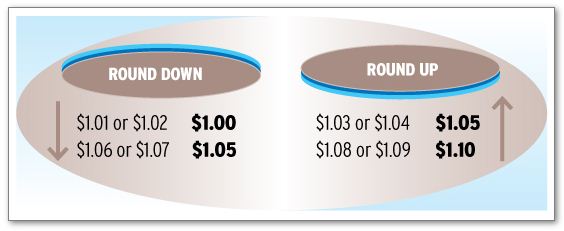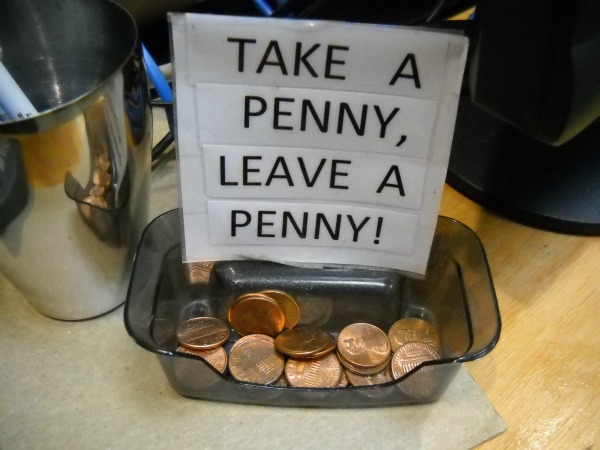 I was in Canada over the summer and had forgotten that they’d done away with the penny — until, that is, I was trying to figure out why I got short-changed in a store, which blithely rounded up the cost of my purchase and cheated me out of a few cents.
I was in Canada over the summer and had forgotten that they’d done away with the penny — until, that is, I was trying to figure out why I got short-changed in a store, which blithely rounded up the cost of my purchase and cheated me out of a few cents.
But then I remembered…
Coz what do you do when it costs more to make a penny than the value that’s ascribed to it? (Phasing them out is estimated to save the Canadian taxpayers $11 million per year!)
 But it is this idea of ascribing value that’s rather interesting — and nicely illustrated in the apparent demise of the penny. For the intangible value lives on despite the tangible coin departing.
But it is this idea of ascribing value that’s rather interesting — and nicely illustrated in the apparent demise of the penny. For the intangible value lives on despite the tangible coin departing.
Let me explain.
You see, at least so far vendors have not shifted from a 100-base pricing system to one based on 5s — i.e., things are still priced at $10.98 and purchases still end up being $28.72, instead of being, say, $10.95 or $28.70 (thereby allowing the nickles and the dimes to do the heavy lifting of making change). So, without those little copper (but mostly steel or zinc, actually) pieces consumers are left imagining how they come out after either rounding up or down. For everyone in the country now keeps a virtual accounting (as per the recommendations found on Canadian mint’s website):
 But, as odd as this imagined accounting may appear to some, what occurred to me was that this is no different from what we were all already doing with pennies — you know, back when stores would put a tray by the cash register, inviting customers to leave a penny or take a penny, as needed.
But, as odd as this imagined accounting may appear to some, what occurred to me was that this is no different from what we were all already doing with pennies — you know, back when stores would put a tray by the cash register, inviting customers to leave a penny or take a penny, as needed.
 While the accounting now takes place wholly in our heads, those public pennies had already demonstrated that the value was far more intangible than we likely thought, since we used them but did not possess them ourselves — that is, our pockets had no pennies in them (instead, old jars at home were likely filled with them), so we dipped into the tray at the counter to get what we needed to make the system work (or leave some for the next person in line, comprising their raw material to help the structure function). So Canadians still do the same but it’s just all in their imagination now — taking or leaving virtual cents.
While the accounting now takes place wholly in our heads, those public pennies had already demonstrated that the value was far more intangible than we likely thought, since we used them but did not possess them ourselves — that is, our pockets had no pennies in them (instead, old jars at home were likely filled with them), so we dipped into the tray at the counter to get what we needed to make the system work (or leave some for the next person in line, comprising their raw material to help the structure function). So Canadians still do the same but it’s just all in their imagination now — taking or leaving virtual cents.
So, despite the penny being discontinued, it’s not really gone anywhere — the idea of the solitary cent is still needed to make the system we’ve concocted work — which, I think, is a nice illustration for how all sorts of acts of identification (what we might otherwise term society’s necessary creative accounting?), though ascribing an identity that is immaterial yet treating it as material, are the building blocks for all sorts of day-to-day interactions.

